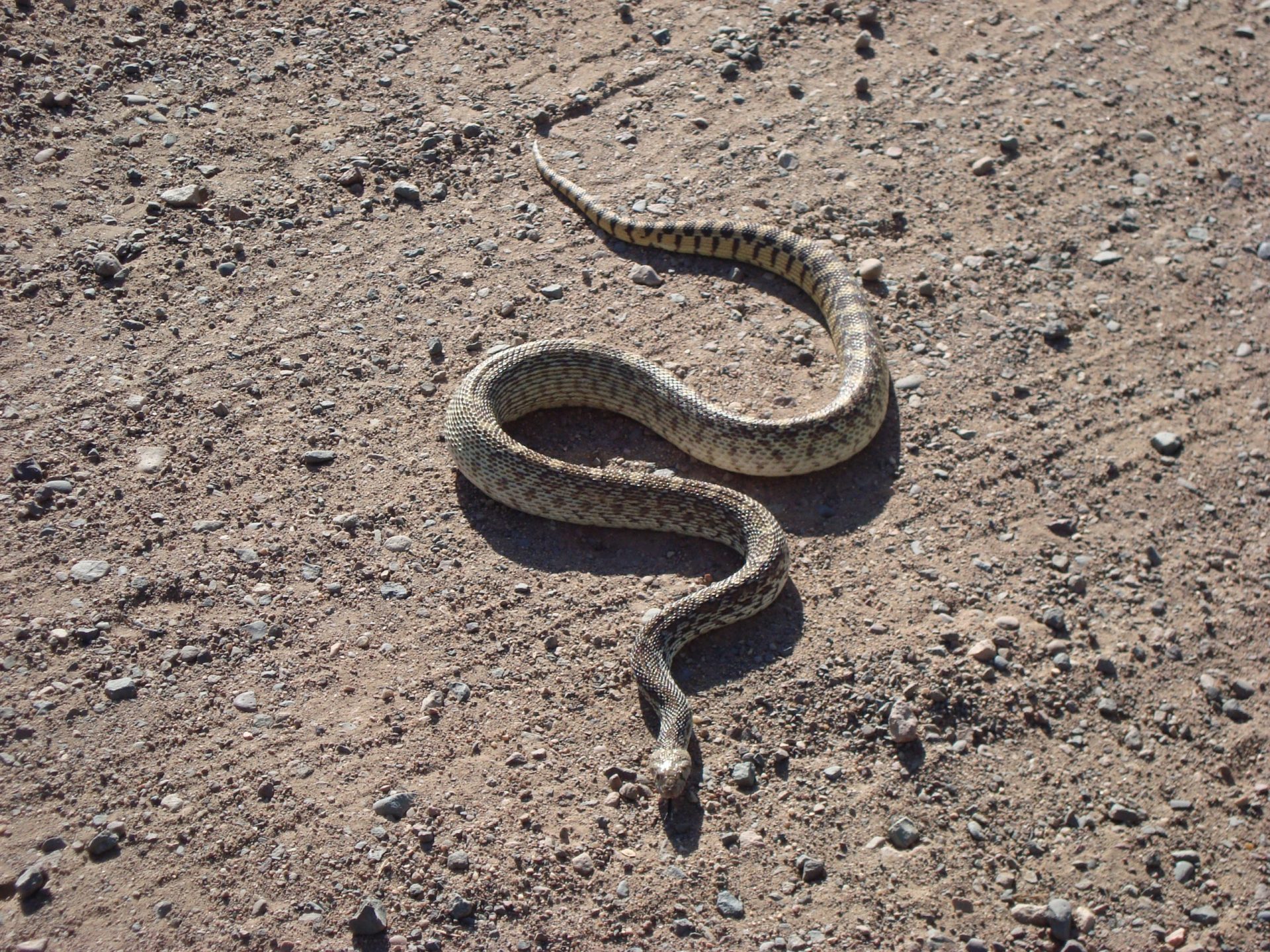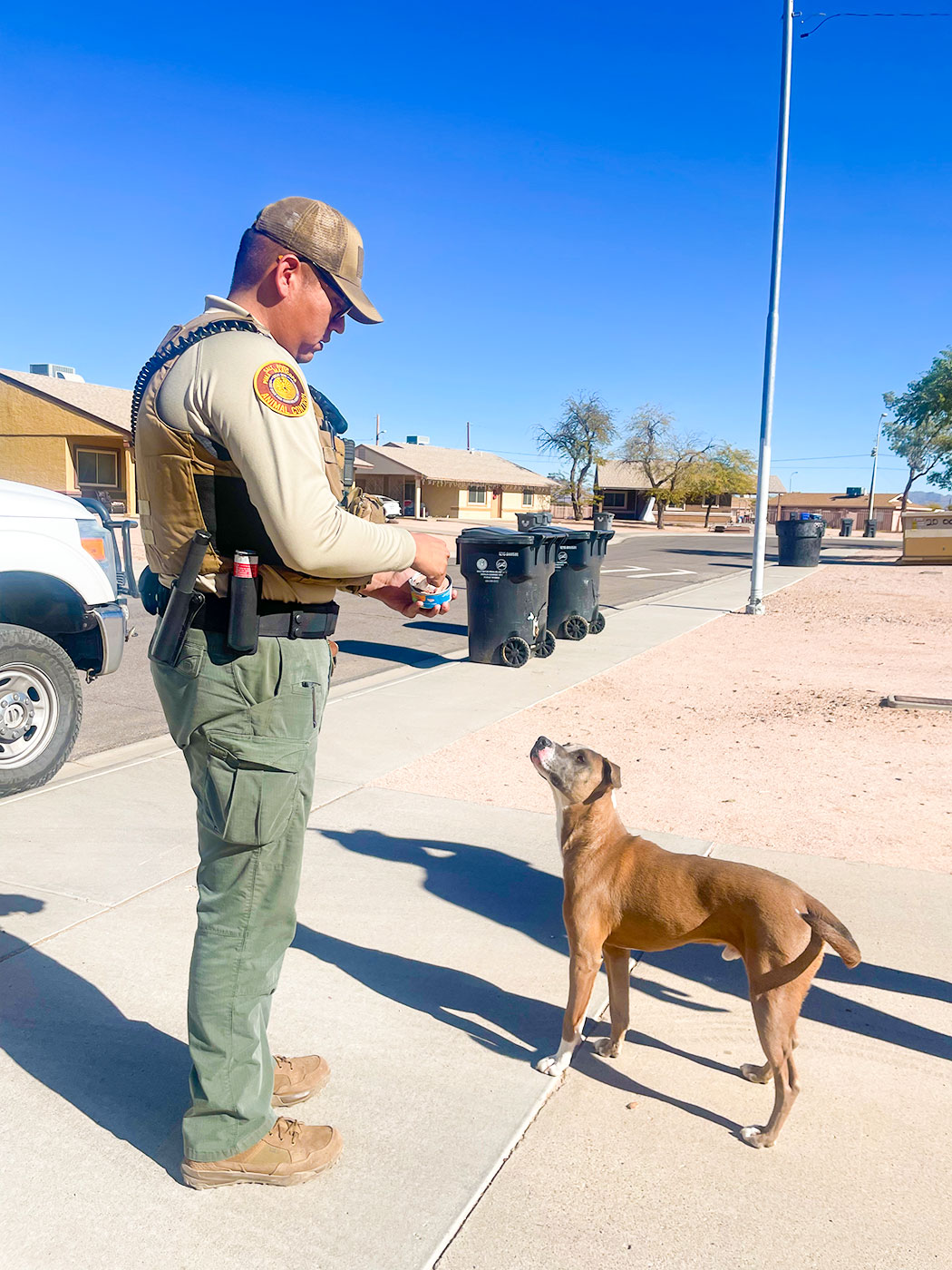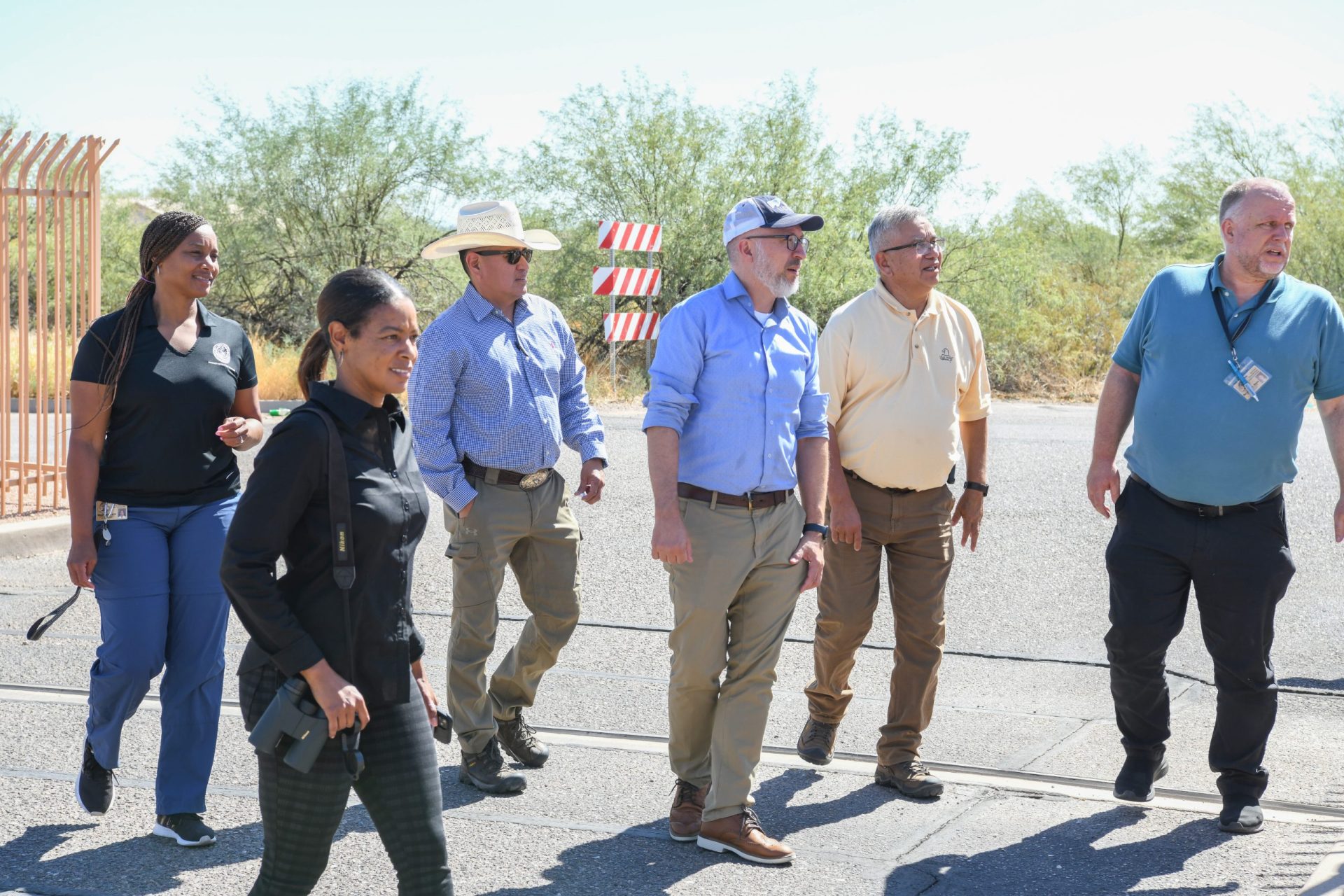VIEWS: 3339
May 6, 2021It’s Snake Season at SRPMIC!
It’s that time of the year for snakes to be more visible in the Salt River Pima-Maricopa Indian Community. All snakes can bite, and while some snakes are venomous, such as rattlesnakes, other snakes you might come across are not venomous.
Snakes will be more active from spring through summer (March to September), but they are seen more at night during the height of the summer because they avoid the high temperatures of the day.
Rattlesnakes can be identified by their triangular-shaped head, and of course, the rattles on their tail. The most commonly encountered rattlesnakes in the Community are the western diamondback and the sidewinder.
Other types of rattlesnakes you might see are the speckled rattlesnake, which lives in rocky areas near mountains or hillsides, and the Mojave rattlesnake. The Mojave rattlesnake lives in open desert areas and is highly dangerous. According to SRPMIC animal control technician Cye Goseyun, unlike other rattlesnakes in Arizona, the Mojave carries a powerful neurotoxin, which is a chemical substance that is poisonous to the nerve system.
Snakes can seem scary in general, but there are “good” snakes in the Community, according to Brian Gewecke from the Community Development Department/EPNR Range Management Program. These are king snakes and gopher snakes. Both are constrictors, which means that they will wrap their bodies around their food and squeeze it to death. King snakes are immune to the venom of rattlesnakes and will eat rattlesnakes and other snakes. Gopher snakes, also known as bull snakes, are found in the Community as well.
If you happen to see or hear a snake, take a step back and try to determine where it is. Figure out a safe way to get around it. Assume it is venomous if you are not sure. If you are safe, contact SRPMIC Animal Control or the Salt River Fire Department for removal of the snake. Rangers or Range Management might also be tasked with the removal.
If by chance you are bitten by a snake, seek immediate medical attention.
Gewecke said that, on average, he will remove 10 to 12 rattlesnakes and other snakes per year from the hay barn on the range alone. He uses snake tongs to remove the snake, aiming for one-third down from the head and two-thirds up from the tail as the best spot to pick them up. Do not pick up any snake yourself.







